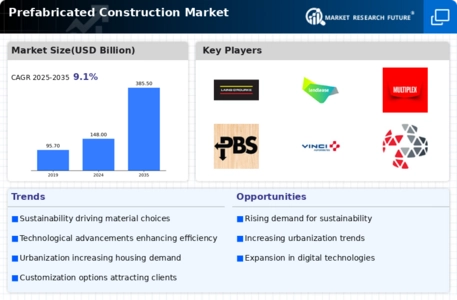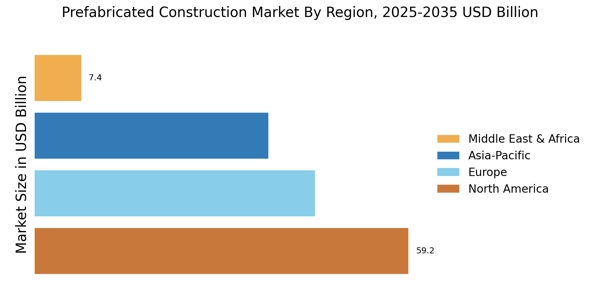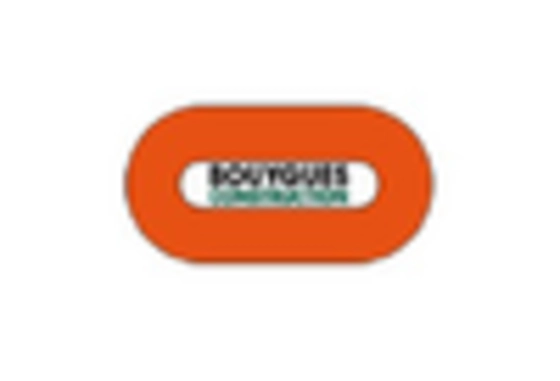The Prefabricated Construction Market is currently characterized by a dynamic competitive landscape, driven by increasing demand for efficient building solutions and sustainability. Key players such as Lendlease (AU), Skanska (SE), and Kiewit Corporation (US) are strategically positioning themselves through innovation and regional expansion. Lendlease (AU) focuses on integrating digital technologies into its construction processes, enhancing project delivery and efficiency. Meanwhile, Skanska (SE) emphasizes sustainable practices, aiming to reduce carbon footprints across its projects. Kiewit Corporation (US) is leveraging its extensive experience in modular construction to optimize supply chains and improve project timelines, thereby shaping a competitive environment that prioritizes efficiency and sustainability.
The market structure appears moderately fragmented, with numerous players vying for market share. Key business tactics include localizing manufacturing to reduce costs and enhance responsiveness to regional demands. This strategy not only optimizes supply chains but also allows companies to tailor their offerings to local markets, thereby increasing competitiveness. The collective influence of these major players fosters a competitive atmosphere where innovation and operational efficiency are paramount.
In August 2025, Lendlease (AU) announced a partnership with a leading technology firm to develop a new digital platform aimed at streamlining project management and enhancing collaboration among stakeholders. This strategic move is likely to bolster Lendlease's position in the market by improving operational efficiencies and reducing project delivery times, which are critical in the fast-paced construction environment.
In September 2025, Skanska (SE) unveiled its latest initiative focused on sustainable modular housing solutions, which are designed to meet the growing demand for eco-friendly living spaces. This initiative not only aligns with global sustainability goals but also positions Skanska as a leader in the green construction sector, potentially attracting environmentally conscious clients and investors.
In October 2025, Kiewit Corporation (US) expanded its modular construction capabilities by acquiring a regional prefabrication facility. This acquisition is expected to enhance Kiewit's production capacity and reduce lead times for projects, thereby solidifying its competitive edge in the modular construction market. Such strategic expansions indicate a trend towards vertical integration, allowing companies to control more aspects of the supply chain.
As of October 2025, the competitive trends in the Prefabricated Construction Market are increasingly defined by digitalization, sustainability, and the integration of artificial intelligence. Strategic alliances are becoming more prevalent, as companies recognize the value of collaboration in enhancing innovation and operational efficiency. Looking ahead, competitive differentiation is likely to evolve from traditional price-based competition to a focus on technological advancements, innovative solutions, and reliable supply chains, reflecting a broader shift in the industry towards value creation and sustainability.


















Leave a Comment